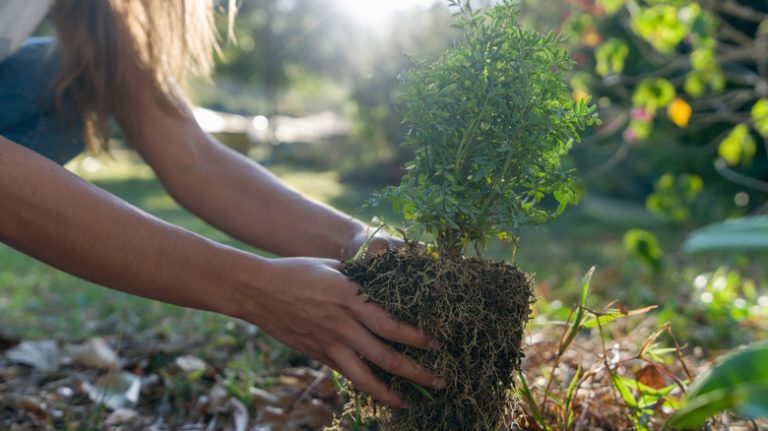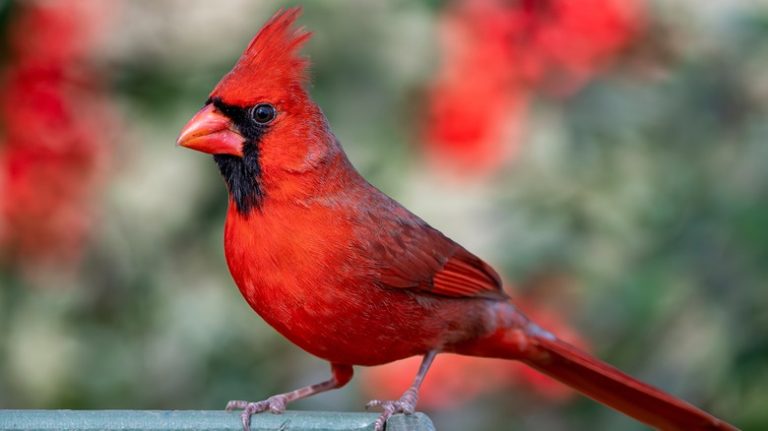The burning bushes have become a popular addition to landscapes in Illinois and other parts of the United States. Many people are asking about their growing conditions, hardiness, and invasiveness.
These colorful shrubs, known for their fiery red foliage in the winter, are adaptable to a wide range of soil types and planting conditions. They are especially suited for hedges and border plantings.
While the burning bush is a fast-growing species that can quickly reach a height of 15 feet or more, it is important to beware of its invasive nature. In some parts of the country, it is considered an invasive species that can take over natural forests and impact local ecosystems. Therefore, it is best to plant them in landscapes where their spread can be controlled.
One reason why the burning bush is so popular is its eye-catching appearance. The red color of its stems and leaves add a splash of color to gardens and attract attention during the winter months. It is no wonder that many people find them visually appealing and want to include them in their landscape design.
If you decide to plant a burning bush, there are a few things you should know. First, they are hardy in zones 4-8, making them suitable for planting in Illinois and other parts of the Midwest. Second, they prefer full sun but can tolerate some shade. Third, they do not require heavy fertilization but will benefit from a balanced fertilizer application in the spring.
When it comes to pruning, it is best to do so during the late winter or early spring. This will encourage new growth and maintain a bushy habit. However, be aware that pruning can cause the plant to produce more stems, resulting in a denser appearance.
In conclusion, the burning bush is a popular shrub in Illinois and other parts of the United States due to its vibrant red foliage and adaptable nature. While it can be a visually appealing addition to any landscape, it’s important to be mindful of its invasive tendencies. By planting them responsibly and controlling their spread, we can continue to enjoy the beauty they bring to our gardens.
Why Won’t Burning Bush Turn Red – Reasons A Burning Bush Stays Green
If you’re planting shrubs and want to add a colorful touch to your landscape, burning bush (Euonymus alatus) is one species you should consider. These popular hedges are known for their vibrant red foliage that turns heads every fall. However, if you find that your burning bush isn’t turning red, there could be a few reasons for this.
- Hardiness zone: Burning bush is best suited for planting in USDA hardiness zones 4 to 8. If you live in a zone that is either too cold or too warm for this species, it may not turn red as expected.
- Sunlight: Burning bush prefers full sun to bring out its fiery red colors. If it’s not getting enough sunlight, the foliage may appear more green than red.
- Fertilizing: Like most plants, burning bush needs proper fertilization to thrive. If you’re not fertilizing it regularly, the foliage may not develop its vibrant red color.
- Watering: Burning bush requires regular watering, especially during dry conditions. If it’s not getting enough water, the foliage may turn brown or stay green instead of turning red.
- Pruning: Proper pruning is essential for maintaining the appearance of burning bush. If it’s not pruned correctly, the foliage may not develop its desired red color.
- Species: It’s important to note that not all types of burning bush turn red. Some species, such as the winged Euonymus (Euonymus alatus ‘Compactus’), have green foliage throughout the year.
- Invasiveness: Burning bush is considered an invasive species in some areas, including Illinois. Before planting it, make sure to learn about the potential impact on the local ecosystem.
If you’re experiencing problems with your burning bush not turning red, be sure to check these factors and make the necessary adjustments. By providing the right level of sunlight, watering conditions, and fertilizing, you can help your burning bush showcase its fiery red colors, creating an eye-catching display in your landscape.
Remember to beware of the invasiveness of burning bush and consider alternative species that can provide similar benefits without the risk of becoming invasive.
Burning Bush Stays Green
Burning bush (Euonymus alatus) is a popular ornamental plant that is known for its fiery red appearance during the fall season. But did you know that this bush stays green most of the year? It is one of the reasons why it is so heavily planted in landscapes across Illinois.
At first glance, the burning bush may not seem like a problem. Its green color and compact habit make it an attractive addition to any garden. However, its hardiness and adaptability are what make it a potential threat to native plantings and natural areas.
Burning bushes can grow in a wide range of soil conditions and sunlight levels. They can thrive in full sun or even deep shade. This means that they can outcompete native plants and disrupt the natural balance of forests and other plant communities.
One of the most frequently asked questions about burning bushes is why they need to be pruned. The answer is simple – if left unpruned, burning bushes can quickly spread and become invasive. Regular pruning helps to keep the bushes in check and prevents them from taking over your garden.
So, what should you do if you have a burning bush in your landscape? Here are some best practices to follow:
- Beware of its invasiveness: If you live in an area where burning bushes are known to be invasive, you should consider removing them from your garden.
- Encourage native plantings: Instead of planting burning bushes, choose native plants that are better adapted to your local conditions and won’t threaten local ecosystems.
- Learn about alternatives: There are many other types of shrubs and bushes that can provide similar colors and ornamental value without the invasive tendencies of burning bushes. Do your research and find the best options for your garden.
- Prune regularly: If you decide to keep a burning bush in your garden, make sure to prune it regularly to prevent it from spreading.
- Fertilize properly: Burning bushes don’t require frequent fertilizing. A light application of balanced fertilizer in early spring should be enough to keep them healthy.
By following these guidelines, you can enjoy the appearance of a burning bush without the negative impact it can have on the environment. So, the next time you see a burning bush, remember to ask yourself if it’s the best choice for your garden and the ecosystem you share it with.
Why Won’t Burning Bush Turn Red
Growing burning bush plants can have a big impact on your landscape, especially when they turn a vibrant red color in the fall. But what happens when your burning bush stays green?
First, it’s important to know that burning bushes are adaptable to a wide range of growing zones and soil conditions. There are several types of burning bushes known for their colorful autumn foliage and stems. The best-selling variety is the Winged Euonymus, which is prized for its bright red berries and upright habit.
So, why won’t your burning bush turn red? First and foremost, they don’t need excessive fertilizing. In fact, too much nitrogen can cause the foliage to stay green instead of turning red. Secondly, the amount of sunlight the bushes receive can impact their color. If they’re planted in full sun, they’re more likely to turn red. If they’re in a shadier spot, the color may not develop as fully.
Another reason why your burning bush may not be turning red is if it’s still a young plant. Burning bushes often start out with green-brown foliage and it takes a few years for the color to develop. So, if you recently planted your burning bush, it may just need more time to mature before it starts displaying its fiery fall colors.
Pruning is another factor to consider. If you prune your burning bush too late in the season or if you prune it too heavily, it may not have enough energy to produce the vibrant red color. Prune your burning bush in early spring or right after it flowers to ensure optimal color development in the fall.
Finally, it’s important to beware of any pests or diseases that may be affecting your burning bush. Certain diseases, such as powdery mildew, can cause the foliage to turn brown instead of red. In addition, aphids and spider mites can threaten the health of your burning bush and affect its color. If you notice any signs of pests or diseases, take action to treat them as soon as possible.
In summary, there are several reasons why your burning bush may not be turning red. From the level of sunlight it receives to how it’s pruned and fertilized, these factors can all play a role in the color development of your plant. If you’re still unsure about why your burning bush won’t turn red, don’t hesitate to ask a local gardening expert for advice. They can help you troubleshoot any problems and ensure your burning bush reaches its full potential as an eye-catching fall feature in your landscape.
What you should know about Burning Bush
Burning Bush, or Euonymus alatus, is a popular ornamental shrub in Illinois. It is known for its eye-catching appearance, especially during the fall when its leaves turn fiery colors. The bush is adaptable to various growing conditions, making it a favorite among garden enthusiasts.
One of the reasons why burning bush is so popular is because it is a low-maintenance plant. It can grow in full sunlight or shade, and it is tolerant of many soil types. However, it is important to note that its invasiveness is a major problem. Burning bush is classified as an invasive species in Illinois, and its berries and seeds can spread easily to natural areas, impacting the local ecosystems.
When planting burning bush, it is crucial to consider its size and the space it will require to grow properly. The bush can reach a height and width of up to 10 feet, so it should not be planted too close to other shrubs or structures. If you do decide to plant burning bush in your garden, it is recommended to frequently prune and fertilize it to encourage a more compact and controlled growth.
| Sunlight | Soil | Watering |
|---|---|---|
| Burning bush can tolerate both full sunlight and partial shade. | The shrub is adaptable to different soil types, but it prefers well-drained soil. | Water the plant regularly, especially during dry periods, to keep the soil moist. |
If you are considering planting burning bush in your landscape, it is important to be aware of its invasiveness and the potential impact on the environment. There are alternatives to burning bush that can provide similar colors and ornamental value without the invasiveness concern. Some popular alternatives include Virginia sweetspire and blueberry bushes.
In conclusion, while burning bush is a visually appealing shrub with its fiery fall colors, it is important to be cautious about its invasiveness. Consider the space, sunlight, and soil conditions before planting, and be sure to monitor and manage its growth. By taking these precautions, you can enjoy the beauty of burning bush in your garden without causing harm to the environment.

